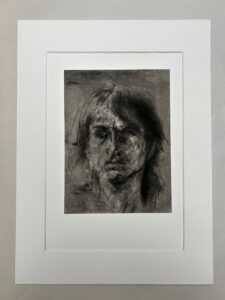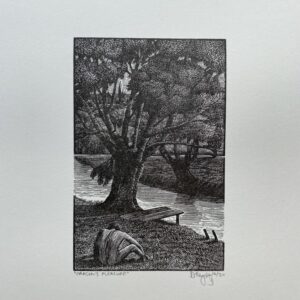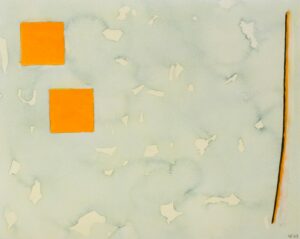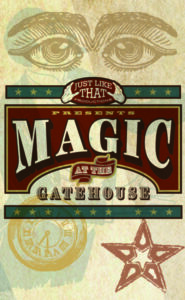
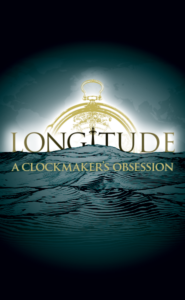
LONGITUDE
A Clockmaker’s Obsession
World premiere of a new musical with crashing waves, swelling music, and an emotional storm across the 18th century that will make you wish you’d brought your life jacket.
Come with us on an epic voyage across time and space to share the trials of a simple clockmaker who lost almost everything in his quest to save others.
A true story of betrayal, obsession, and injustice, conquered only by the love of his family and the intervention of Mad King George.
Ages: 8+

LONGITUDE
A Clockmaker’s Obsession
World premiere of a new musical with crashing waves, swelling music, and an emotional storm across the 18th century that will make you wish you’d brought your life jacket.
Come with us on an epic voyage across time and space to share the trials of a simple clockmaker who lost almost everything in his quest to save others.
A true story of betrayal, obsession, and injustice, conquered only by the love of his family and the intervention of Mad King George.
Ages: 8+

LONGITUDE
A Clockmaker’s Obsession
World premiere of a new musical with crashing waves, swelling music, and an emotional storm across the 18th century that will make you wish you’d brought your life jacket.
Come with us on an epic voyage across time and space to share the trials of a simple clockmaker who lost almost everything in his quest to save others.
A true story of betrayal, obsession, and injustice, conquered only by the love of his family and the intervention of Mad King George.
Ages: 8+

LONGITUDE
A Clockmaker’s Obsession
World premiere of a new musical with crashing waves, swelling music, and an emotional storm across the 18th century that will make you wish you’d brought your life jacket.
Come with us on an epic voyage across time and space to share the trials of a simple clockmaker who lost almost everything in his quest to save others.
A true story of betrayal, obsession, and injustice, conquered only by the love of his family and the intervention of Mad King George.
Ages: 8+

LONGITUDE
A Clockmaker’s Obsession
World premiere of a new musical with crashing waves, swelling music, and an emotional storm across the 18th century that will make you wish you’d brought your life jacket.
Come with us on an epic voyage across time and space to share the trials of a simple clockmaker who lost almost everything in his quest to save others.
A true story of betrayal, obsession, and injustice, conquered only by the love of his family and the intervention of Mad King George.
Ages: 8+

LONGITUDE
A Clockmaker’s Obsession
World premiere of a new musical with crashing waves, swelling music, and an emotional storm across the 18th century that will make you wish you’d brought your life jacket.
Come with us on an epic voyage across time and space to share the trials of a simple clockmaker who lost almost everything in his quest to save others.
A true story of betrayal, obsession, and injustice, conquered only by the love of his family and the intervention of Mad King George.
Ages: 8+

LONGITUDE
A Clockmaker’s Obsession
World premiere of a new musical with crashing waves, swelling music, and an emotional storm across the 18th century that will make you wish you’d brought your life jacket.
Come with us on an epic voyage across time and space to share the trials of a simple clockmaker who lost almost everything in his quest to save others.
A true story of betrayal, obsession, and injustice, conquered only by the love of his family and the intervention of Mad King George.
Ages: 8+

LONGITUDE
A Clockmaker’s Obsession
World premiere of a new musical with crashing waves, swelling music, and an emotional storm across the 18th century that will make you wish you’d brought your life jacket.
Come with us on an epic voyage across time and space to share the trials of a simple clockmaker who lost almost everything in his quest to save others.
A true story of betrayal, obsession, and injustice, conquered only by the love of his family and the intervention of Mad King George.
Ages: 8+

LONGITUDE
A Clockmaker’s Obsession
World premiere of a new musical with crashing waves, swelling music, and an emotional storm across the 18th century that will make you wish you’d brought your life jacket.
Come with us on an epic voyage across time and space to share the trials of a simple clockmaker who lost almost everything in his quest to save others.
A true story of betrayal, obsession, and injustice, conquered only by the love of his family and the intervention of Mad King George.
Ages: 8+
The work Jean Ramsey is showing at Highgate Gallery results from an interest in the relationship
between the drawn and the printed image. It follows on from her studies in photography that
culminated in an exhibition of gum-bichromate prints. This early process utilises the sun to develop
a prepared light-sensitive emulsion that when applied to paper with a pronounced surface or
‘tooth’ can result in a painterly quality.
Jean’s degree in Fine Art (sculpture) from King’s College, Newcastle, then the University of Durham,
included a Hatton Scholarship year. She acknowledges the initial influence of an inspired teacher
in north London, Nommie Durell, whose mantra ‘no day without a line’ continues to resonate with her.
The three-dimensional disciplines of sculpture and her experience in set design established form and structure
as crucial elements in her work and have become the foundation for her current exploration in two-dimensions.
Using traditional subject matter, principally self-portraiture and studies of people she knows well, every
work begins with a drawing.
“Having worked in collaboration with others over the years, as a practitioner and as a teacher, this exhibition
is the result of a not altogether conscious decision to revert to personal discovery through drawing
(seeing) and manipulating (printing)”.
The earlier prints are mainly soft-ground etchings and mezzotints, the later work frequently becoming
monoprints by the combination of inscribing by etching and drawing directly into the inked plate.
There are some preliminary studies and proof prints from the most current work on display in which the
visual development of the idea can be traced. Man Ray, known principally for his photography, describes
painting as “.…an adventure in which some great force might suddenly change the whole aspect of
things….”, echoed by Julian Trevelyan’s ….”collaboration with the god of chance….”, also a reference to painting.
Jean Ramsey’s exhibition of prints suggest the transformation that takes place, from close examination of the
subject, the analysis, via the rigour and fluidity of the printing process that can lead to unforeseen results.
Some earlier gum-bichromate photographic prints, although not hung, are available to view in a portfolio
and the artist will be in attendance throughout the exhibition’s run to discuss her work.
Highgate Gallery opening times: Weds – Fri: 13.00 – 17.00, Sat: 11.00 – 16.00, Sun: 11.00 – 17.00

LONGITUDE
A Clockmaker’s Obsession
World premiere of a new musical with crashing waves, swelling music, and an emotional storm across the 18th century that will make you wish you’d brought your life jacket.
Come with us on an epic voyage across time and space to share the trials of a simple clockmaker who lost almost everything in his quest to save others.
A true story of betrayal, obsession, and injustice, conquered only by the love of his family and the intervention of Mad King George.
Ages: 8+
The work Jean Ramsey is showing at Highgate Gallery results from an interest in the relationship
between the drawn and the printed image. It follows on from her studies in photography that
culminated in an exhibition of gum-bichromate prints. This early process utilises the sun to develop
a prepared light-sensitive emulsion that when applied to paper with a pronounced surface or
‘tooth’ can result in a painterly quality.
Jean’s degree in Fine Art (sculpture) from King’s College, Newcastle, then the University of Durham,
included a Hatton Scholarship year. She acknowledges the initial influence of an inspired teacher
in north London, Nommie Durell, whose mantra ‘no day without a line’ continues to resonate with her.
The three-dimensional disciplines of sculpture and her experience in set design established form and structure
as crucial elements in her work and have become the foundation for her current exploration in two-dimensions.
Using traditional subject matter, principally self-portraiture and studies of people she knows well, every
work begins with a drawing.
“Having worked in collaboration with others over the years, as a practitioner and as a teacher, this exhibition
is the result of a not altogether conscious decision to revert to personal discovery through drawing
(seeing) and manipulating (printing)”.
The earlier prints are mainly soft-ground etchings and mezzotints, the later work frequently becoming
monoprints by the combination of inscribing by etching and drawing directly into the inked plate.
There are some preliminary studies and proof prints from the most current work on display in which the
visual development of the idea can be traced. Man Ray, known principally for his photography, describes
painting as “.…an adventure in which some great force might suddenly change the whole aspect of
things….”, echoed by Julian Trevelyan’s ….”collaboration with the god of chance….”, also a reference to painting.
Jean Ramsey’s exhibition of prints suggest the transformation that takes place, from close examination of the
subject, the analysis, via the rigour and fluidity of the printing process that can lead to unforeseen results.
Some earlier gum-bichromate photographic prints, although not hung, are available to view in a portfolio
and the artist will be in attendance throughout the exhibition’s run to discuss her work.
Highgate Gallery opening times: Weds – Fri: 13.00 – 17.00, Sat: 11.00 – 16.00, Sun: 11.00 – 17.00

LONGITUDE
A Clockmaker’s Obsession
World premiere of a new musical with crashing waves, swelling music, and an emotional storm across the 18th century that will make you wish you’d brought your life jacket.
Come with us on an epic voyage across time and space to share the trials of a simple clockmaker who lost almost everything in his quest to save others.
A true story of betrayal, obsession, and injustice, conquered only by the love of his family and the intervention of Mad King George.
Ages: 8+
The work Jean Ramsey is showing at Highgate Gallery results from an interest in the relationship
between the drawn and the printed image. It follows on from her studies in photography that
culminated in an exhibition of gum-bichromate prints. This early process utilises the sun to develop
a prepared light-sensitive emulsion that when applied to paper with a pronounced surface or
‘tooth’ can result in a painterly quality.
Jean’s degree in Fine Art (sculpture) from King’s College, Newcastle, then the University of Durham,
included a Hatton Scholarship year. She acknowledges the initial influence of an inspired teacher
in north London, Nommie Durell, whose mantra ‘no day without a line’ continues to resonate with her.
The three-dimensional disciplines of sculpture and her experience in set design established form and structure
as crucial elements in her work and have become the foundation for her current exploration in two-dimensions.
Using traditional subject matter, principally self-portraiture and studies of people she knows well, every
work begins with a drawing.
“Having worked in collaboration with others over the years, as a practitioner and as a teacher, this exhibition
is the result of a not altogether conscious decision to revert to personal discovery through drawing
(seeing) and manipulating (printing)”.
The earlier prints are mainly soft-ground etchings and mezzotints, the later work frequently becoming
monoprints by the combination of inscribing by etching and drawing directly into the inked plate.
There are some preliminary studies and proof prints from the most current work on display in which the
visual development of the idea can be traced. Man Ray, known principally for his photography, describes
painting as “.…an adventure in which some great force might suddenly change the whole aspect of
things….”, echoed by Julian Trevelyan’s ….”collaboration with the god of chance….”, also a reference to painting.
Jean Ramsey’s exhibition of prints suggest the transformation that takes place, from close examination of the
subject, the analysis, via the rigour and fluidity of the printing process that can lead to unforeseen results.
Some earlier gum-bichromate photographic prints, although not hung, are available to view in a portfolio
and the artist will be in attendance throughout the exhibition’s run to discuss her work.
Highgate Gallery opening times: Weds – Fri: 13.00 – 17.00, Sat: 11.00 – 16.00, Sun: 11.00 – 17.00

LONGITUDE
A Clockmaker’s Obsession
World premiere of a new musical with crashing waves, swelling music, and an emotional storm across the 18th century that will make you wish you’d brought your life jacket.
Come with us on an epic voyage across time and space to share the trials of a simple clockmaker who lost almost everything in his quest to save others.
A true story of betrayal, obsession, and injustice, conquered only by the love of his family and the intervention of Mad King George.
Ages: 8+
The work Jean Ramsey is showing at Highgate Gallery results from an interest in the relationship
between the drawn and the printed image. It follows on from her studies in photography that
culminated in an exhibition of gum-bichromate prints. This early process utilises the sun to develop
a prepared light-sensitive emulsion that when applied to paper with a pronounced surface or
‘tooth’ can result in a painterly quality.
Jean’s degree in Fine Art (sculpture) from King’s College, Newcastle, then the University of Durham,
included a Hatton Scholarship year. She acknowledges the initial influence of an inspired teacher
in north London, Nommie Durell, whose mantra ‘no day without a line’ continues to resonate with her.
The three-dimensional disciplines of sculpture and her experience in set design established form and structure
as crucial elements in her work and have become the foundation for her current exploration in two-dimensions.
Using traditional subject matter, principally self-portraiture and studies of people she knows well, every
work begins with a drawing.
“Having worked in collaboration with others over the years, as a practitioner and as a teacher, this exhibition
is the result of a not altogether conscious decision to revert to personal discovery through drawing
(seeing) and manipulating (printing)”.
The earlier prints are mainly soft-ground etchings and mezzotints, the later work frequently becoming
monoprints by the combination of inscribing by etching and drawing directly into the inked plate.
There are some preliminary studies and proof prints from the most current work on display in which the
visual development of the idea can be traced. Man Ray, known principally for his photography, describes
painting as “.…an adventure in which some great force might suddenly change the whole aspect of
things….”, echoed by Julian Trevelyan’s ….”collaboration with the god of chance….”, also a reference to painting.
Jean Ramsey’s exhibition of prints suggest the transformation that takes place, from close examination of the
subject, the analysis, via the rigour and fluidity of the printing process that can lead to unforeseen results.
Some earlier gum-bichromate photographic prints, although not hung, are available to view in a portfolio
and the artist will be in attendance throughout the exhibition’s run to discuss her work.
Highgate Gallery opening times: Weds – Fri: 13.00 – 17.00, Sat: 11.00 – 16.00, Sun: 11.00 – 17.00
The work Jean Ramsey is showing at Highgate Gallery results from an interest in the relationship
between the drawn and the printed image. It follows on from her studies in photography that
culminated in an exhibition of gum-bichromate prints. This early process utilises the sun to develop
a prepared light-sensitive emulsion that when applied to paper with a pronounced surface or
‘tooth’ can result in a painterly quality.
Jean’s degree in Fine Art (sculpture) from King’s College, Newcastle, then the University of Durham,
included a Hatton Scholarship year. She acknowledges the initial influence of an inspired teacher
in north London, Nommie Durell, whose mantra ‘no day without a line’ continues to resonate with her.
The three-dimensional disciplines of sculpture and her experience in set design established form and structure
as crucial elements in her work and have become the foundation for her current exploration in two-dimensions.
Using traditional subject matter, principally self-portraiture and studies of people she knows well, every
work begins with a drawing.
“Having worked in collaboration with others over the years, as a practitioner and as a teacher, this exhibition
is the result of a not altogether conscious decision to revert to personal discovery through drawing
(seeing) and manipulating (printing)”.
The earlier prints are mainly soft-ground etchings and mezzotints, the later work frequently becoming
monoprints by the combination of inscribing by etching and drawing directly into the inked plate.
There are some preliminary studies and proof prints from the most current work on display in which the
visual development of the idea can be traced. Man Ray, known principally for his photography, describes
painting as “.…an adventure in which some great force might suddenly change the whole aspect of
things….”, echoed by Julian Trevelyan’s ….”collaboration with the god of chance….”, also a reference to painting.
Jean Ramsey’s exhibition of prints suggest the transformation that takes place, from close examination of the
subject, the analysis, via the rigour and fluidity of the printing process that can lead to unforeseen results.
Some earlier gum-bichromate photographic prints, although not hung, are available to view in a portfolio
and the artist will be in attendance throughout the exhibition’s run to discuss her work.
Highgate Gallery opening times: Weds – Fri: 13.00 – 17.00, Sat: 11.00 – 16.00, Sun: 11.00 – 17.00
The work Jean Ramsey is showing at Highgate Gallery results from an interest in the relationship
between the drawn and the printed image. It follows on from her studies in photography that
culminated in an exhibition of gum-bichromate prints. This early process utilises the sun to develop
a prepared light-sensitive emulsion that when applied to paper with a pronounced surface or
‘tooth’ can result in a painterly quality.
Jean’s degree in Fine Art (sculpture) from King’s College, Newcastle, then the University of Durham,
included a Hatton Scholarship year. She acknowledges the initial influence of an inspired teacher
in north London, Nommie Durell, whose mantra ‘no day without a line’ continues to resonate with her.
The three-dimensional disciplines of sculpture and her experience in set design established form and structure
as crucial elements in her work and have become the foundation for her current exploration in two-dimensions.
Using traditional subject matter, principally self-portraiture and studies of people she knows well, every
work begins with a drawing.
“Having worked in collaboration with others over the years, as a practitioner and as a teacher, this exhibition
is the result of a not altogether conscious decision to revert to personal discovery through drawing
(seeing) and manipulating (printing)”.
The earlier prints are mainly soft-ground etchings and mezzotints, the later work frequently becoming
monoprints by the combination of inscribing by etching and drawing directly into the inked plate.
There are some preliminary studies and proof prints from the most current work on display in which the
visual development of the idea can be traced. Man Ray, known principally for his photography, describes
painting as “.…an adventure in which some great force might suddenly change the whole aspect of
things….”, echoed by Julian Trevelyan’s ….”collaboration with the god of chance….”, also a reference to painting.
Jean Ramsey’s exhibition of prints suggest the transformation that takes place, from close examination of the
subject, the analysis, via the rigour and fluidity of the printing process that can lead to unforeseen results.
Some earlier gum-bichromate photographic prints, although not hung, are available to view in a portfolio
and the artist will be in attendance throughout the exhibition’s run to discuss her work.
Highgate Gallery opening times: Weds – Fri: 13.00 – 17.00, Sat: 11.00 – 16.00, Sun: 11.00 – 17.00
The work Jean Ramsey is showing at Highgate Gallery results from an interest in the relationship
between the drawn and the printed image. It follows on from her studies in photography that
culminated in an exhibition of gum-bichromate prints. This early process utilises the sun to develop
a prepared light-sensitive emulsion that when applied to paper with a pronounced surface or
‘tooth’ can result in a painterly quality.
Jean’s degree in Fine Art (sculpture) from King’s College, Newcastle, then the University of Durham,
included a Hatton Scholarship year. She acknowledges the initial influence of an inspired teacher
in north London, Nommie Durell, whose mantra ‘no day without a line’ continues to resonate with her.
The three-dimensional disciplines of sculpture and her experience in set design established form and structure
as crucial elements in her work and have become the foundation for her current exploration in two-dimensions.
Using traditional subject matter, principally self-portraiture and studies of people she knows well, every
work begins with a drawing.
“Having worked in collaboration with others over the years, as a practitioner and as a teacher, this exhibition
is the result of a not altogether conscious decision to revert to personal discovery through drawing
(seeing) and manipulating (printing)”.
The earlier prints are mainly soft-ground etchings and mezzotints, the later work frequently becoming
monoprints by the combination of inscribing by etching and drawing directly into the inked plate.
There are some preliminary studies and proof prints from the most current work on display in which the
visual development of the idea can be traced. Man Ray, known principally for his photography, describes
painting as “.…an adventure in which some great force might suddenly change the whole aspect of
things….”, echoed by Julian Trevelyan’s ….”collaboration with the god of chance….”, also a reference to painting.
Jean Ramsey’s exhibition of prints suggest the transformation that takes place, from close examination of the
subject, the analysis, via the rigour and fluidity of the printing process that can lead to unforeseen results.
Some earlier gum-bichromate photographic prints, although not hung, are available to view in a portfolio
and the artist will be in attendance throughout the exhibition’s run to discuss her work.
Highgate Gallery opening times: Weds – Fri: 13.00 – 17.00, Sat: 11.00 – 16.00, Sun: 11.00 – 17.00
The work Jean Ramsey is showing at Highgate Gallery results from an interest in the relationship
between the drawn and the printed image. It follows on from her studies in photography that
culminated in an exhibition of gum-bichromate prints. This early process utilises the sun to develop
a prepared light-sensitive emulsion that when applied to paper with a pronounced surface or
‘tooth’ can result in a painterly quality.
Jean’s degree in Fine Art (sculpture) from King’s College, Newcastle, then the University of Durham,
included a Hatton Scholarship year. She acknowledges the initial influence of an inspired teacher
in north London, Nommie Durell, whose mantra ‘no day without a line’ continues to resonate with her.
The three-dimensional disciplines of sculpture and her experience in set design established form and structure
as crucial elements in her work and have become the foundation for her current exploration in two-dimensions.
Using traditional subject matter, principally self-portraiture and studies of people she knows well, every
work begins with a drawing.
“Having worked in collaboration with others over the years, as a practitioner and as a teacher, this exhibition
is the result of a not altogether conscious decision to revert to personal discovery through drawing
(seeing) and manipulating (printing)”.
The earlier prints are mainly soft-ground etchings and mezzotints, the later work frequently becoming
monoprints by the combination of inscribing by etching and drawing directly into the inked plate.
There are some preliminary studies and proof prints from the most current work on display in which the
visual development of the idea can be traced. Man Ray, known principally for his photography, describes
painting as “.…an adventure in which some great force might suddenly change the whole aspect of
things….”, echoed by Julian Trevelyan’s ….”collaboration with the god of chance….”, also a reference to painting.
Jean Ramsey’s exhibition of prints suggest the transformation that takes place, from close examination of the
subject, the analysis, via the rigour and fluidity of the printing process that can lead to unforeseen results.
Some earlier gum-bichromate photographic prints, although not hung, are available to view in a portfolio
and the artist will be in attendance throughout the exhibition’s run to discuss her work.
Highgate Gallery opening times: Weds – Fri: 13.00 – 17.00, Sat: 11.00 – 16.00, Sun: 11.00 – 17.00
The work Jean Ramsey is showing at Highgate Gallery results from an interest in the relationship
between the drawn and the printed image. It follows on from her studies in photography that
culminated in an exhibition of gum-bichromate prints. This early process utilises the sun to develop
a prepared light-sensitive emulsion that when applied to paper with a pronounced surface or
‘tooth’ can result in a painterly quality.
Jean’s degree in Fine Art (sculpture) from King’s College, Newcastle, then the University of Durham,
included a Hatton Scholarship year. She acknowledges the initial influence of an inspired teacher
in north London, Nommie Durell, whose mantra ‘no day without a line’ continues to resonate with her.
The three-dimensional disciplines of sculpture and her experience in set design established form and structure
as crucial elements in her work and have become the foundation for her current exploration in two-dimensions.
Using traditional subject matter, principally self-portraiture and studies of people she knows well, every
work begins with a drawing.
“Having worked in collaboration with others over the years, as a practitioner and as a teacher, this exhibition
is the result of a not altogether conscious decision to revert to personal discovery through drawing
(seeing) and manipulating (printing)”.
The earlier prints are mainly soft-ground etchings and mezzotints, the later work frequently becoming
monoprints by the combination of inscribing by etching and drawing directly into the inked plate.
There are some preliminary studies and proof prints from the most current work on display in which the
visual development of the idea can be traced. Man Ray, known principally for his photography, describes
painting as “.…an adventure in which some great force might suddenly change the whole aspect of
things….”, echoed by Julian Trevelyan’s ….”collaboration with the god of chance….”, also a reference to painting.
Jean Ramsey’s exhibition of prints suggest the transformation that takes place, from close examination of the
subject, the analysis, via the rigour and fluidity of the printing process that can lead to unforeseen results.
Some earlier gum-bichromate photographic prints, although not hung, are available to view in a portfolio
and the artist will be in attendance throughout the exhibition’s run to discuss her work.
Highgate Gallery opening times: Weds – Fri: 13.00 – 17.00, Sat: 11.00 – 16.00, Sun: 11.00 – 17.00
The work Jean Ramsey is showing at Highgate Gallery results from an interest in the relationship
between the drawn and the printed image. It follows on from her studies in photography that
culminated in an exhibition of gum-bichromate prints. This early process utilises the sun to develop
a prepared light-sensitive emulsion that when applied to paper with a pronounced surface or
‘tooth’ can result in a painterly quality.
Jean’s degree in Fine Art (sculpture) from King’s College, Newcastle, then the University of Durham,
included a Hatton Scholarship year. She acknowledges the initial influence of an inspired teacher
in north London, Nommie Durell, whose mantra ‘no day without a line’ continues to resonate with her.
The three-dimensional disciplines of sculpture and her experience in set design established form and structure
as crucial elements in her work and have become the foundation for her current exploration in two-dimensions.
Using traditional subject matter, principally self-portraiture and studies of people she knows well, every
work begins with a drawing.
“Having worked in collaboration with others over the years, as a practitioner and as a teacher, this exhibition
is the result of a not altogether conscious decision to revert to personal discovery through drawing
(seeing) and manipulating (printing)”.
The earlier prints are mainly soft-ground etchings and mezzotints, the later work frequently becoming
monoprints by the combination of inscribing by etching and drawing directly into the inked plate.
There are some preliminary studies and proof prints from the most current work on display in which the
visual development of the idea can be traced. Man Ray, known principally for his photography, describes
painting as “.…an adventure in which some great force might suddenly change the whole aspect of
things….”, echoed by Julian Trevelyan’s ….”collaboration with the god of chance….”, also a reference to painting.
Jean Ramsey’s exhibition of prints suggest the transformation that takes place, from close examination of the
subject, the analysis, via the rigour and fluidity of the printing process that can lead to unforeseen results.
Some earlier gum-bichromate photographic prints, although not hung, are available to view in a portfolio
and the artist will be in attendance throughout the exhibition’s run to discuss her work.
Highgate Gallery opening times: Weds – Fri: 13.00 – 17.00, Sat: 11.00 – 16.00, Sun: 11.00 – 17.00
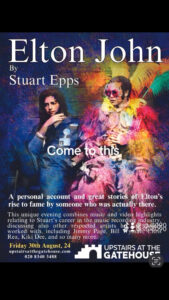

Jeremy Sassoon’s MOJO
Saturday 31st August 7.30pm
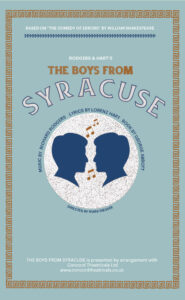
“If it’s good enough for Shakespeare, it’s good enough for us.”
Rodgers and Hart’s classic 1938 musical comedy adaptation of The Comedy of Errors returns to the London stage for its debut at Upstairs at the Gatehouse, in a madcap tale of mistaken identity, danger and romance in ancient Greece!
Antipholus of Syracuse and his servant, Dromio, arrive in Ephesus as part of a long search for their respective identical twins from whom they were separated as children during a shipwreck. But citizens of Syracuse caught in Ephesus are subject to the death penalty. As fate has it, there’s another Antipholus who’s an established citizen of Ephesus, served by another Dromio. Confusions multiply as wives are baffled by husbands, one twin is wrongly jailed and Antipholus of Syracuse falls in love with his wife’s sister – or does he?
Arguably Rodgers and Hart’s best, the score includes the hit songs Falling in Love with Love; This Can’t Be Love and Sing for Your Supper.
Music by Richard Rodgers; Lyrics by Lorenz Hart; Book by George Abbott
Directed by Mark Giesser
Presented by arrangement with Concord Theatricals Ltd.
www.concordtheatricals.co.uk

“If it’s good enough for Shakespeare, it’s good enough for us.”
Rodgers and Hart’s classic 1938 musical comedy adaptation of The Comedy of Errors returns to the London stage for its debut at Upstairs at the Gatehouse, in a madcap tale of mistaken identity, danger and romance in ancient Greece!
Antipholus of Syracuse and his servant, Dromio, arrive in Ephesus as part of a long search for their respective identical twins from whom they were separated as children during a shipwreck. But citizens of Syracuse caught in Ephesus are subject to the death penalty. As fate has it, there’s another Antipholus who’s an established citizen of Ephesus, served by another Dromio. Confusions multiply as wives are baffled by husbands, one twin is wrongly jailed and Antipholus of Syracuse falls in love with his wife’s sister – or does he?
Arguably Rodgers and Hart’s best, the score includes the hit songs Falling in Love with Love; This Can’t Be Love and Sing for Your Supper.
Music by Richard Rodgers; Lyrics by Lorenz Hart; Book by George Abbott
Directed by Mark Giesser
Presented by arrangement with Concord Theatricals Ltd.
www.concordtheatricals.co.uk

“If it’s good enough for Shakespeare, it’s good enough for us.”
Rodgers and Hart’s classic 1938 musical comedy adaptation of The Comedy of Errors returns to the London stage for its debut at Upstairs at the Gatehouse, in a madcap tale of mistaken identity, danger and romance in ancient Greece!
Antipholus of Syracuse and his servant, Dromio, arrive in Ephesus as part of a long search for their respective identical twins from whom they were separated as children during a shipwreck. But citizens of Syracuse caught in Ephesus are subject to the death penalty. As fate has it, there’s another Antipholus who’s an established citizen of Ephesus, served by another Dromio. Confusions multiply as wives are baffled by husbands, one twin is wrongly jailed and Antipholus of Syracuse falls in love with his wife’s sister – or does he?
Arguably Rodgers and Hart’s best, the score includes the hit songs Falling in Love with Love; This Can’t Be Love and Sing for Your Supper.
Music by Richard Rodgers; Lyrics by Lorenz Hart; Book by George Abbott
Directed by Mark Giesser
Presented by arrangement with Concord Theatricals Ltd.
www.concordtheatricals.co.uk

“If it’s good enough for Shakespeare, it’s good enough for us.”
Rodgers and Hart’s classic 1938 musical comedy adaptation of The Comedy of Errors returns to the London stage for its debut at Upstairs at the Gatehouse, in a madcap tale of mistaken identity, danger and romance in ancient Greece!
Antipholus of Syracuse and his servant, Dromio, arrive in Ephesus as part of a long search for their respective identical twins from whom they were separated as children during a shipwreck. But citizens of Syracuse caught in Ephesus are subject to the death penalty. As fate has it, there’s another Antipholus who’s an established citizen of Ephesus, served by another Dromio. Confusions multiply as wives are baffled by husbands, one twin is wrongly jailed and Antipholus of Syracuse falls in love with his wife’s sister – or does he?
Arguably Rodgers and Hart’s best, the score includes the hit songs Falling in Love with Love; This Can’t Be Love and Sing for Your Supper.
Music by Richard Rodgers; Lyrics by Lorenz Hart; Book by George Abbott
Directed by Mark Giesser
Presented by arrangement with Concord Theatricals Ltd.
www.concordtheatricals.co.uk

“If it’s good enough for Shakespeare, it’s good enough for us.”
Rodgers and Hart’s classic 1938 musical comedy adaptation of The Comedy of Errors returns to the London stage for its debut at Upstairs at the Gatehouse, in a madcap tale of mistaken identity, danger and romance in ancient Greece!
Antipholus of Syracuse and his servant, Dromio, arrive in Ephesus as part of a long search for their respective identical twins from whom they were separated as children during a shipwreck. But citizens of Syracuse caught in Ephesus are subject to the death penalty. As fate has it, there’s another Antipholus who’s an established citizen of Ephesus, served by another Dromio. Confusions multiply as wives are baffled by husbands, one twin is wrongly jailed and Antipholus of Syracuse falls in love with his wife’s sister – or does he?
Arguably Rodgers and Hart’s best, the score includes the hit songs Falling in Love with Love; This Can’t Be Love and Sing for Your Supper.
Music by Richard Rodgers; Lyrics by Lorenz Hart; Book by George Abbott
Directed by Mark Giesser
Presented by arrangement with Concord Theatricals Ltd.
www.concordtheatricals.co.uk

“If it’s good enough for Shakespeare, it’s good enough for us.”
Rodgers and Hart’s classic 1938 musical comedy adaptation of The Comedy of Errors returns to the London stage for its debut at Upstairs at the Gatehouse, in a madcap tale of mistaken identity, danger and romance in ancient Greece!
Antipholus of Syracuse and his servant, Dromio, arrive in Ephesus as part of a long search for their respective identical twins from whom they were separated as children during a shipwreck. But citizens of Syracuse caught in Ephesus are subject to the death penalty. As fate has it, there’s another Antipholus who’s an established citizen of Ephesus, served by another Dromio. Confusions multiply as wives are baffled by husbands, one twin is wrongly jailed and Antipholus of Syracuse falls in love with his wife’s sister – or does he?
Arguably Rodgers and Hart’s best, the score includes the hit songs Falling in Love with Love; This Can’t Be Love and Sing for Your Supper.
Music by Richard Rodgers; Lyrics by Lorenz Hart; Book by George Abbott
Directed by Mark Giesser
Presented by arrangement with Concord Theatricals Ltd.
www.concordtheatricals.co.uk

“If it’s good enough for Shakespeare, it’s good enough for us.”
Rodgers and Hart’s classic 1938 musical comedy adaptation of The Comedy of Errors returns to the London stage for its debut at Upstairs at the Gatehouse, in a madcap tale of mistaken identity, danger and romance in ancient Greece!
Antipholus of Syracuse and his servant, Dromio, arrive in Ephesus as part of a long search for their respective identical twins from whom they were separated as children during a shipwreck. But citizens of Syracuse caught in Ephesus are subject to the death penalty. As fate has it, there’s another Antipholus who’s an established citizen of Ephesus, served by another Dromio. Confusions multiply as wives are baffled by husbands, one twin is wrongly jailed and Antipholus of Syracuse falls in love with his wife’s sister – or does he?
Arguably Rodgers and Hart’s best, the score includes the hit songs Falling in Love with Love; This Can’t Be Love and Sing for Your Supper.
Music by Richard Rodgers; Lyrics by Lorenz Hart; Book by George Abbott
Directed by Mark Giesser
Presented by arrangement with Concord Theatricals Ltd.
www.concordtheatricals.co.uk
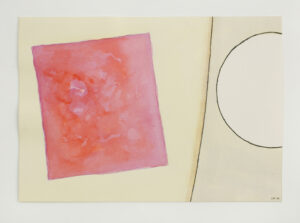
This exhibition, Cuillin Bantock’s fourth at Highgate Gallery, will be the culmination of sixty five years of
experience as a visual artist.
Bantock’s work is all landscape-based. Life-long familiarity with a particular coastal sand-dune system in North
Wales is a persistent point of reference. His choice of media is wide-ranging and includes oil paint, acrylic, gouache,
conte and linocut. His approach has shifted from representation to abstraction, but he strongly believes that all
art must relate to something outside itself.
The exhibition will show two types of work: Indian Ink drawings, and watercolour paintings.
The Indian ink drawings are from the 2022 series ‘Forty-one approaches to a View’. The ‘view’ is of a particular
duneland studied repeatedly from the same spot. The emphasis has been on making quite simple statements
about that particular space. The first studies that Bantock made of this terrain (also in Indian ink) date from 1961.
It was only while making the recent drawings in 2022 that he realised that other artists, in their later years,
had adopted a similar approach; for example Hokusai, with his ‘Thirty Six Views of Mount Fuji’.
The watercolours were made between 2020 and 2024. These are derived from the same landscape as the
ink drawings, but with a particular emphasis on pictorial space (through flatness) and pictorial light
(through colour), but handled abstractly without reference to specific locales. To some extent the watercolours
are a new departure for Bantock. His only previous experience with the medium was very occasional figurative
work (again, of duneland). He describes watercolour as ‘the most challenging medium of all.’
The two bodies of work are united by a perennial search for clarity of execution and expression, and pictorial economy
free of didacticism, leaving room for spontaneity.
Cuillin Bantock has enjoyed a rich and varied career as artist, scientist, educator and writer. He is an Oxford-trained
zoologist who worked as a professional biologist for 20 years, and later studied at Camberwell College of Art. He has
written and lectured extensively on a wide range of subjects, including science, wildlife conservation, art and artists.
His work has been exhibited widely over many years, and is held in a large number of private and corporate collections.
Highgate Gallery is delighted to be hosting this exhibition, which Bantock has decided – as he approaches
his ninetieth birthday – shall be his last with us.
Gallery open: Wed – Fri: 13.00 – 17.00, Sat: 11.00 – 16.00, Sun: 11.00 -17.00

“If it’s good enough for Shakespeare, it’s good enough for us.”
Rodgers and Hart’s classic 1938 musical comedy adaptation of The Comedy of Errors returns to the London stage for its debut at Upstairs at the Gatehouse, in a madcap tale of mistaken identity, danger and romance in ancient Greece!
Antipholus of Syracuse and his servant, Dromio, arrive in Ephesus as part of a long search for their respective identical twins from whom they were separated as children during a shipwreck. But citizens of Syracuse caught in Ephesus are subject to the death penalty. As fate has it, there’s another Antipholus who’s an established citizen of Ephesus, served by another Dromio. Confusions multiply as wives are baffled by husbands, one twin is wrongly jailed and Antipholus of Syracuse falls in love with his wife’s sister – or does he?
Arguably Rodgers and Hart’s best, the score includes the hit songs Falling in Love with Love; This Can’t Be Love and Sing for Your Supper.
Music by Richard Rodgers; Lyrics by Lorenz Hart; Book by George Abbott
Directed by Mark Giesser
Presented by arrangement with Concord Theatricals Ltd.
www.concordtheatricals.co.uk

This exhibition, Cuillin Bantock’s fourth at Highgate Gallery, will be the culmination of sixty five years of
experience as a visual artist.
Bantock’s work is all landscape-based. Life-long familiarity with a particular coastal sand-dune system in North
Wales is a persistent point of reference. His choice of media is wide-ranging and includes oil paint, acrylic, gouache,
conte and linocut. His approach has shifted from representation to abstraction, but he strongly believes that all
art must relate to something outside itself.
The exhibition will show two types of work: Indian Ink drawings, and watercolour paintings.
The Indian ink drawings are from the 2022 series ‘Forty-one approaches to a View’. The ‘view’ is of a particular
duneland studied repeatedly from the same spot. The emphasis has been on making quite simple statements
about that particular space. The first studies that Bantock made of this terrain (also in Indian ink) date from 1961.
It was only while making the recent drawings in 2022 that he realised that other artists, in their later years,
had adopted a similar approach; for example Hokusai, with his ‘Thirty Six Views of Mount Fuji’.
The watercolours were made between 2020 and 2024. These are derived from the same landscape as the
ink drawings, but with a particular emphasis on pictorial space (through flatness) and pictorial light
(through colour), but handled abstractly without reference to specific locales. To some extent the watercolours
are a new departure for Bantock. His only previous experience with the medium was very occasional figurative
work (again, of duneland). He describes watercolour as ‘the most challenging medium of all.’
The two bodies of work are united by a perennial search for clarity of execution and expression, and pictorial economy
free of didacticism, leaving room for spontaneity.
Cuillin Bantock has enjoyed a rich and varied career as artist, scientist, educator and writer. He is an Oxford-trained
zoologist who worked as a professional biologist for 20 years, and later studied at Camberwell College of Art. He has
written and lectured extensively on a wide range of subjects, including science, wildlife conservation, art and artists.
His work has been exhibited widely over many years, and is held in a large number of private and corporate collections.
Highgate Gallery is delighted to be hosting this exhibition, which Bantock has decided – as he approaches
his ninetieth birthday – shall be his last with us.
Gallery open: Wed – Fri: 13.00 – 17.00, Sat: 11.00 – 16.00, Sun: 11.00 -17.00

“If it’s good enough for Shakespeare, it’s good enough for us.”
Rodgers and Hart’s classic 1938 musical comedy adaptation of The Comedy of Errors returns to the London stage for its debut at Upstairs at the Gatehouse, in a madcap tale of mistaken identity, danger and romance in ancient Greece!
Antipholus of Syracuse and his servant, Dromio, arrive in Ephesus as part of a long search for their respective identical twins from whom they were separated as children during a shipwreck. But citizens of Syracuse caught in Ephesus are subject to the death penalty. As fate has it, there’s another Antipholus who’s an established citizen of Ephesus, served by another Dromio. Confusions multiply as wives are baffled by husbands, one twin is wrongly jailed and Antipholus of Syracuse falls in love with his wife’s sister – or does he?
Arguably Rodgers and Hart’s best, the score includes the hit songs Falling in Love with Love; This Can’t Be Love and Sing for Your Supper.
Music by Richard Rodgers; Lyrics by Lorenz Hart; Book by George Abbott
Directed by Mark Giesser
Presented by arrangement with Concord Theatricals Ltd.
www.concordtheatricals.co.uk

This exhibition, Cuillin Bantock’s fourth at Highgate Gallery, will be the culmination of sixty five years of
experience as a visual artist.
Bantock’s work is all landscape-based. Life-long familiarity with a particular coastal sand-dune system in North
Wales is a persistent point of reference. His choice of media is wide-ranging and includes oil paint, acrylic, gouache,
conte and linocut. His approach has shifted from representation to abstraction, but he strongly believes that all
art must relate to something outside itself.
The exhibition will show two types of work: Indian Ink drawings, and watercolour paintings.
The Indian ink drawings are from the 2022 series ‘Forty-one approaches to a View’. The ‘view’ is of a particular
duneland studied repeatedly from the same spot. The emphasis has been on making quite simple statements
about that particular space. The first studies that Bantock made of this terrain (also in Indian ink) date from 1961.
It was only while making the recent drawings in 2022 that he realised that other artists, in their later years,
had adopted a similar approach; for example Hokusai, with his ‘Thirty Six Views of Mount Fuji’.
The watercolours were made between 2020 and 2024. These are derived from the same landscape as the
ink drawings, but with a particular emphasis on pictorial space (through flatness) and pictorial light
(through colour), but handled abstractly without reference to specific locales. To some extent the watercolours
are a new departure for Bantock. His only previous experience with the medium was very occasional figurative
work (again, of duneland). He describes watercolour as ‘the most challenging medium of all.’
The two bodies of work are united by a perennial search for clarity of execution and expression, and pictorial economy
free of didacticism, leaving room for spontaneity.
Cuillin Bantock has enjoyed a rich and varied career as artist, scientist, educator and writer. He is an Oxford-trained
zoologist who worked as a professional biologist for 20 years, and later studied at Camberwell College of Art. He has
written and lectured extensively on a wide range of subjects, including science, wildlife conservation, art and artists.
His work has been exhibited widely over many years, and is held in a large number of private and corporate collections.
Highgate Gallery is delighted to be hosting this exhibition, which Bantock has decided – as he approaches
his ninetieth birthday – shall be his last with us.
Gallery open: Wed – Fri: 13.00 – 17.00, Sat: 11.00 – 16.00, Sun: 11.00 -17.00

“If it’s good enough for Shakespeare, it’s good enough for us.”
Rodgers and Hart’s classic 1938 musical comedy adaptation of The Comedy of Errors returns to the London stage for its debut at Upstairs at the Gatehouse, in a madcap tale of mistaken identity, danger and romance in ancient Greece!
Antipholus of Syracuse and his servant, Dromio, arrive in Ephesus as part of a long search for their respective identical twins from whom they were separated as children during a shipwreck. But citizens of Syracuse caught in Ephesus are subject to the death penalty. As fate has it, there’s another Antipholus who’s an established citizen of Ephesus, served by another Dromio. Confusions multiply as wives are baffled by husbands, one twin is wrongly jailed and Antipholus of Syracuse falls in love with his wife’s sister – or does he?
Arguably Rodgers and Hart’s best, the score includes the hit songs Falling in Love with Love; This Can’t Be Love and Sing for Your Supper.
Music by Richard Rodgers; Lyrics by Lorenz Hart; Book by George Abbott
Directed by Mark Giesser
Presented by arrangement with Concord Theatricals Ltd.
www.concordtheatricals.co.uk

“If it’s good enough for Shakespeare, it’s good enough for us.”
Rodgers and Hart’s classic 1938 musical comedy adaptation of The Comedy of Errors returns to the London stage for its debut at Upstairs at the Gatehouse, in a madcap tale of mistaken identity, danger and romance in ancient Greece!
Antipholus of Syracuse and his servant, Dromio, arrive in Ephesus as part of a long search for their respective identical twins from whom they were separated as children during a shipwreck. But citizens of Syracuse caught in Ephesus are subject to the death penalty. As fate has it, there’s another Antipholus who’s an established citizen of Ephesus, served by another Dromio. Confusions multiply as wives are baffled by husbands, one twin is wrongly jailed and Antipholus of Syracuse falls in love with his wife’s sister – or does he?
Arguably Rodgers and Hart’s best, the score includes the hit songs Falling in Love with Love; This Can’t Be Love and Sing for Your Supper.
Music by Richard Rodgers; Lyrics by Lorenz Hart; Book by George Abbott
Directed by Mark Giesser
Presented by arrangement with Concord Theatricals Ltd.
www.concordtheatricals.co.uk

This exhibition, Cuillin Bantock’s fourth at Highgate Gallery, will be the culmination of sixty five years of
experience as a visual artist.
Bantock’s work is all landscape-based. Life-long familiarity with a particular coastal sand-dune system in North
Wales is a persistent point of reference. His choice of media is wide-ranging and includes oil paint, acrylic, gouache,
conte and linocut. His approach has shifted from representation to abstraction, but he strongly believes that all
art must relate to something outside itself.
The exhibition will show two types of work: Indian Ink drawings, and watercolour paintings.
The Indian ink drawings are from the 2022 series ‘Forty-one approaches to a View’. The ‘view’ is of a particular
duneland studied repeatedly from the same spot. The emphasis has been on making quite simple statements
about that particular space. The first studies that Bantock made of this terrain (also in Indian ink) date from 1961.
It was only while making the recent drawings in 2022 that he realised that other artists, in their later years,
had adopted a similar approach; for example Hokusai, with his ‘Thirty Six Views of Mount Fuji’.
The watercolours were made between 2020 and 2024. These are derived from the same landscape as the
ink drawings, but with a particular emphasis on pictorial space (through flatness) and pictorial light
(through colour), but handled abstractly without reference to specific locales. To some extent the watercolours
are a new departure for Bantock. His only previous experience with the medium was very occasional figurative
work (again, of duneland). He describes watercolour as ‘the most challenging medium of all.’
The two bodies of work are united by a perennial search for clarity of execution and expression, and pictorial economy
free of didacticism, leaving room for spontaneity.
Cuillin Bantock has enjoyed a rich and varied career as artist, scientist, educator and writer. He is an Oxford-trained
zoologist who worked as a professional biologist for 20 years, and later studied at Camberwell College of Art. He has
written and lectured extensively on a wide range of subjects, including science, wildlife conservation, art and artists.
His work has been exhibited widely over many years, and is held in a large number of private and corporate collections.
Highgate Gallery is delighted to be hosting this exhibition, which Bantock has decided – as he approaches
his ninetieth birthday – shall be his last with us.
Gallery open: Wed – Fri: 13.00 – 17.00, Sat: 11.00 – 16.00, Sun: 11.00 -17.00
